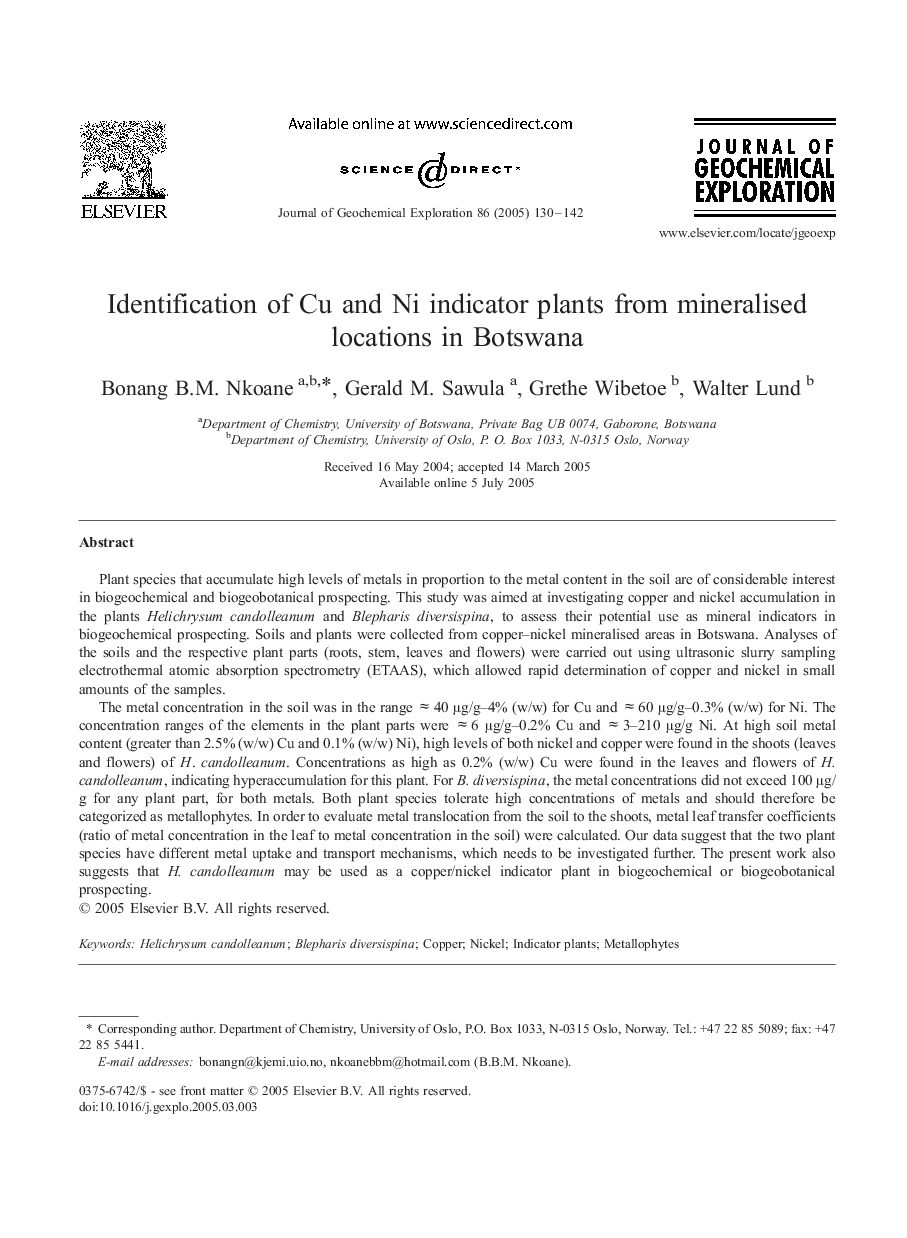| Article ID | Journal | Published Year | Pages | File Type |
|---|---|---|---|---|
| 9461181 | Journal of Geochemical Exploration | 2005 | 13 Pages |
Abstract
The metal concentration in the soil was in the range â 40 μg/g-4% (w/w) for Cu and â 60 μg/g-0.3% (w/w) for Ni. The concentration ranges of the elements in the plant parts were â 6 μg/g-0.2% Cu and â 3-210 μg/g Ni. At high soil metal content (greater than 2.5% (w/w) Cu and 0.1% (w/w) Ni), high levels of both nickel and copper were found in the shoots (leaves and flowers) of H. candolleanum. Concentrations as high as 0.2% (w/w) Cu were found in the leaves and flowers of H. candolleanum, indicating hyperaccumulation for this plant. For B. diversispina, the metal concentrations did not exceed 100 μg/g for any plant part, for both metals. Both plant species tolerate high concentrations of metals and should therefore be categorized as metallophytes. In order to evaluate metal translocation from the soil to the shoots, metal leaf transfer coefficients (ratio of metal concentration in the leaf to metal concentration in the soil) were calculated. Our data suggest that the two plant species have different metal uptake and transport mechanisms, which needs to be investigated further. The present work also suggests that H. candolleanum may be used as a copper/nickel indicator plant in biogeochemical or biogeobotanical prospecting.
Related Topics
Physical Sciences and Engineering
Earth and Planetary Sciences
Economic Geology
Authors
Bonang B.M. Nkoane, Gerald M. Sawula, Grethe Wibetoe, Walter Lund,
